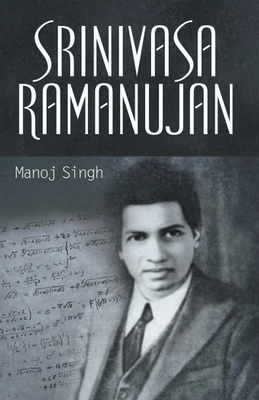Srinivasa Ramanujan

Srinivasa Ramanujan
Srinivasa Ramanujan (22 December 1887 - 26 April 1920) was an Indianmathematician who lived during the British Rule in India. Though he had almost no formal training in pure mathematics, he made substantial contributions to mathematical analysis, number theory, infinite series, and continued fractions, including solutions to mathematical problems considered to be unsolvable. Ramanujan initially developed his own mathematical research in isolation; it was quickly recognized by Indian mathematicians. Seeking mathematicians who could better understand his work, in 1913 he began a postal partnership with the English mathematician G. H. Hardy at the University of Cambridge, England. Recognizing the extraordinary work sent to him as samples, Hardy arranged travel for Ramanujan to Cambridge. In his notes, Ramanujan had produced groundbreaking new theorems, including some that Hardy stated had 'defeated [him and his colleagues] completely', in addition to rediscovering recently proven but highly advanced results.During his short life, Ramanujan independently compiled nearly 3,900 results (mostly identities and equations). Many were completely novel; his original and highly unconventional results, such as the Ramanujan prime, the Ramanujan theta function, partition formulae, and mock theta functions, have opened entire new areas of work and inspired a vast amount of further research. Nearly all his claims have now been proven correct. The Ramanujan Journal, a peer-reviewed scientific journal, was established to publish work in all areas of mathematics influenced by Ramanujan, and his notebooks - containing summaries of his published and unpublished results - have been analyzed and studied for decades since his death as a source of new mathematical ideas. As late as 2011 and again in 2012, researchers continued to discover that mere comments in his writings about "simple properties" and "similar outputs" for certain findings were themselves profound and subtle number theory results that remained unsuspected until nearly a century after his death and which relied on work published in 2006. He became one of the youngest Fellows of the Royal Society and only the second Indian member, and the first Indian to be elected a Fellow of Trinity College, Cambridge. Of his original letters, Hardy stated that a 'single look' was enough to show they could only have been written by a mathematician of the highest calibre, comparing Ramanujan to other mathematical geniuses such
PRP: 123.92 Lei
Acesta este Pretul Recomandat de Producator. Pretul de vanzare al produsului este afisat mai jos.
111.53Lei
111.53Lei
123.92 LeiIndisponibil
Descrierea produsului
Srinivasa Ramanujan (22 December 1887 - 26 April 1920) was an Indianmathematician who lived during the British Rule in India. Though he had almost no formal training in pure mathematics, he made substantial contributions to mathematical analysis, number theory, infinite series, and continued fractions, including solutions to mathematical problems considered to be unsolvable. Ramanujan initially developed his own mathematical research in isolation; it was quickly recognized by Indian mathematicians. Seeking mathematicians who could better understand his work, in 1913 he began a postal partnership with the English mathematician G. H. Hardy at the University of Cambridge, England. Recognizing the extraordinary work sent to him as samples, Hardy arranged travel for Ramanujan to Cambridge. In his notes, Ramanujan had produced groundbreaking new theorems, including some that Hardy stated had 'defeated [him and his colleagues] completely', in addition to rediscovering recently proven but highly advanced results.During his short life, Ramanujan independently compiled nearly 3,900 results (mostly identities and equations). Many were completely novel; his original and highly unconventional results, such as the Ramanujan prime, the Ramanujan theta function, partition formulae, and mock theta functions, have opened entire new areas of work and inspired a vast amount of further research. Nearly all his claims have now been proven correct. The Ramanujan Journal, a peer-reviewed scientific journal, was established to publish work in all areas of mathematics influenced by Ramanujan, and his notebooks - containing summaries of his published and unpublished results - have been analyzed and studied for decades since his death as a source of new mathematical ideas. As late as 2011 and again in 2012, researchers continued to discover that mere comments in his writings about "simple properties" and "similar outputs" for certain findings were themselves profound and subtle number theory results that remained unsuspected until nearly a century after his death and which relied on work published in 2006. He became one of the youngest Fellows of the Royal Society and only the second Indian member, and the first Indian to be elected a Fellow of Trinity College, Cambridge. Of his original letters, Hardy stated that a 'single look' was enough to show they could only have been written by a mathematician of the highest calibre, comparing Ramanujan to other mathematical geniuses such
Detaliile produsului











